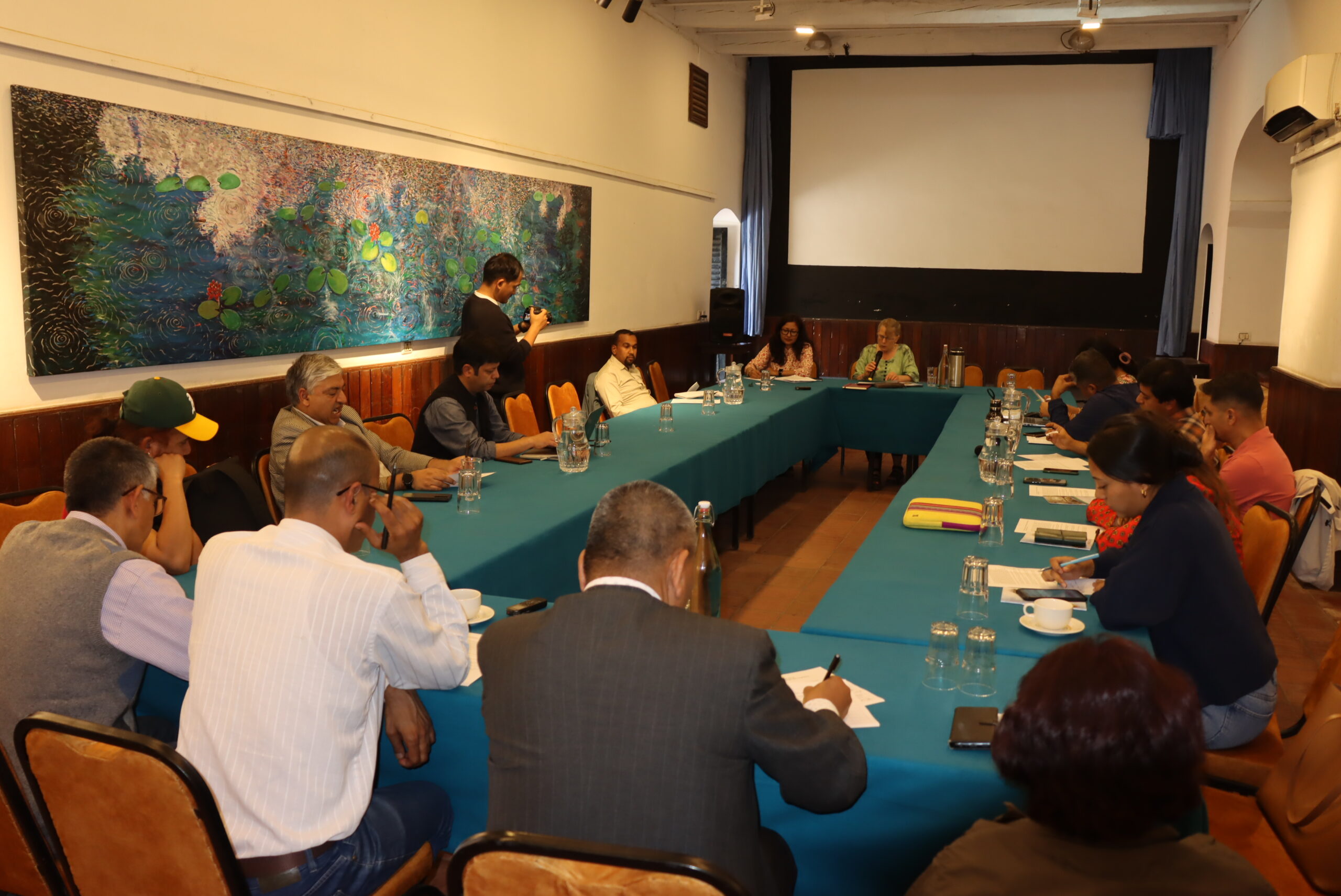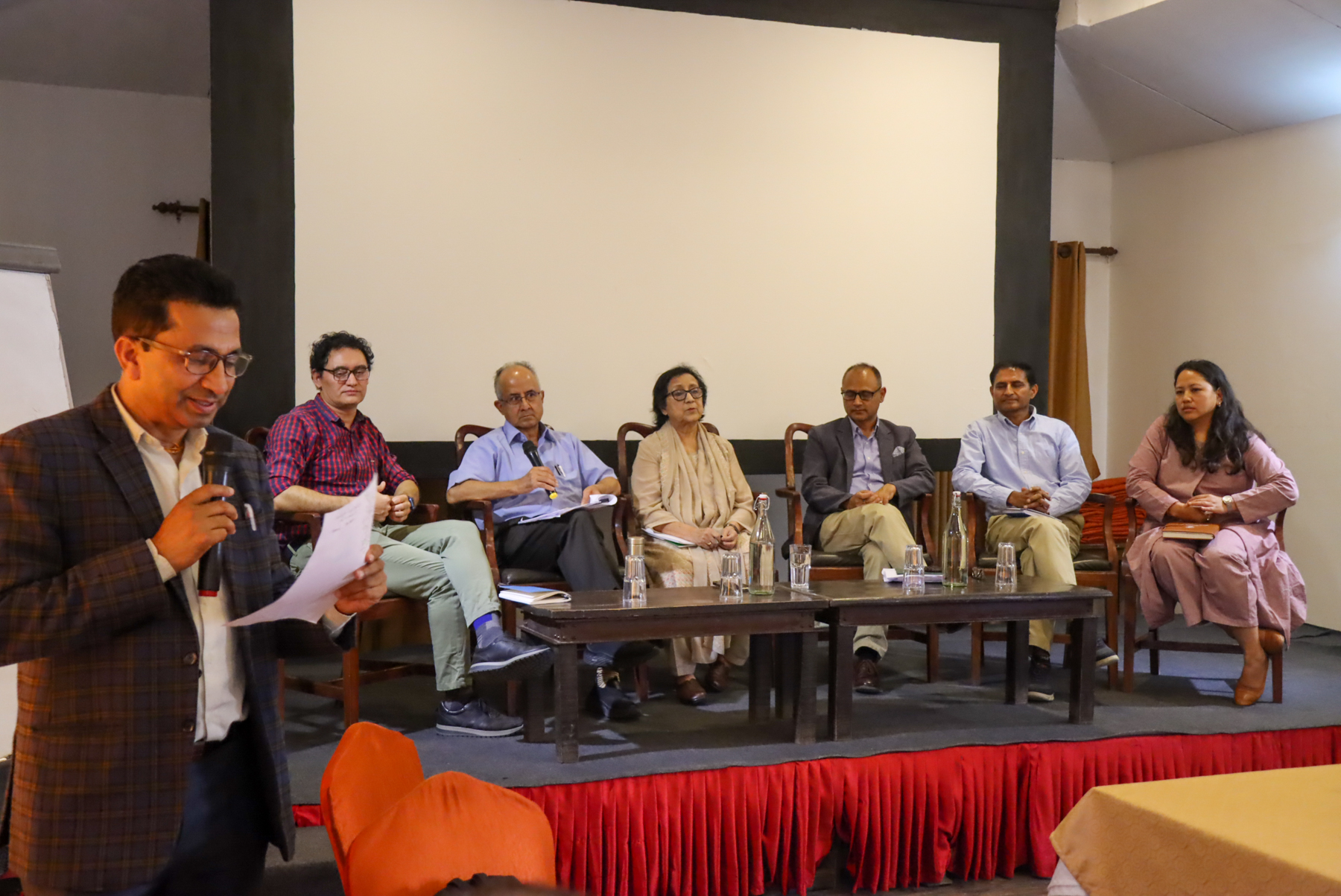Southasia Institute of Advanced Studies (SIAS) and ForestAction Nepal (FA), in collaboration with the University of Edinburgh (UoE), organized a dialogue on Forest Management on 12th December 2021 in Kathmandu. Bringing together a diverse set of actors, the dialogue’s premise was set to discuss the burning issue of forest management in Nepal. A decade-long practice of scientific forest management in Nepal’s community-based forestry has given rise to a diversity of opinions and experiences. The conflict between some of these viewpoints has resulted in a state of dilemma to move forward with the active management of forests. In this context, this dialogue also intended to critically reflect on the practice of scientific forestry in Nepal over the last decade and draw some policy-relevant messages. 15 participants which included government officials, professors, researchers, journalists, and FECOFUN representatives joined the discussion along with five researchers from SIAS and ForestAction.
Dr. Dinesh Paudel, Associate Professor at the Appalachian State University drew some context on scientific forestry and shared the preliminary findings from a study that has synthesized numerous debates, research, and publications around scientific forestry in Nepal. In doing so, he stressed that the conceptual discussion and analysis around scientific forestry in Nepal is absent. This lack of discussion has led to the application of an orthodox and conservative business system such as the contractor-led timber extraction under the guise of scientific forestry. The result of this is the development of financial incentives-driven nexus among local community leaders (elite), contractors, and forest officers.
He further added that scientific forestry is being disoriented from the local level with limited participation of the local community. This has weakened the local level’s collective action leading to a lack of transparency, increased corruption, and a rise in techno-bureaucratic influence. He pointed out that concrete plans have been lacking at the community level on the spending of the income from forest management for livelihood enhancement.
However, he was positive that due to the scientific and commercial utilization, forest productivity has been high even though the ecosystem productivity is compromised. He suggested that along with commercial utilization, the practice of scientific forestry should be taken forward without compromising the principles of fundamental community collective actions. In the end, he emphasized that scientific forestry should be more livelihood-centric and consider all kinds of livelihood needs than focusing on timber production and profit-making.
Dr. Paudel’s reflections were followed by views from other participants. Some suggested simultaneous synthesis of practice and results followed by conceptualization rather than basing the topic through an academic lens. Likewise, some opined to make the practice more participatory, considering the community-based forest management, while making sure forest productivity is not compromised. The need to rethink the scientific forest management scheme implemented on a one-size-fits-all narrative was also brought up by the participants. They believed that rather one should determine the silviculture system and practice based on the needs and priorities of local people. The participants also stressed the need for a new institutional modality and simplification of the management process according to the users’ needs. Citing the case of scientific forest management, they also put forward suggestions to initiate discussions and debates at all levels when introducing new concepts.
Lastly, Dr. Dil Khatri, Executive Director of SIAS, provided a summary of the event by drawing two takeaway messages. First, he highlighted the need for context-informed silvicultural systems that work for community-based forest management. Secondly, he focused on the need for a more adaptive approach with space for action and learning towards contextual forest management mode.
The discussion ended with mutual agreement by all participants that productive discussions and further conversations must be initiated to attain amicable solutions to the current deadlock of forest management.




